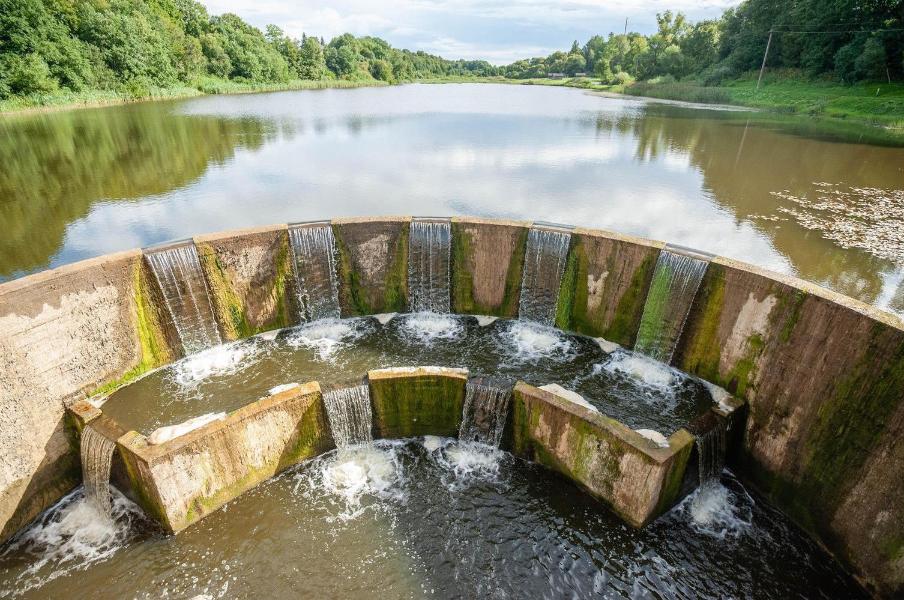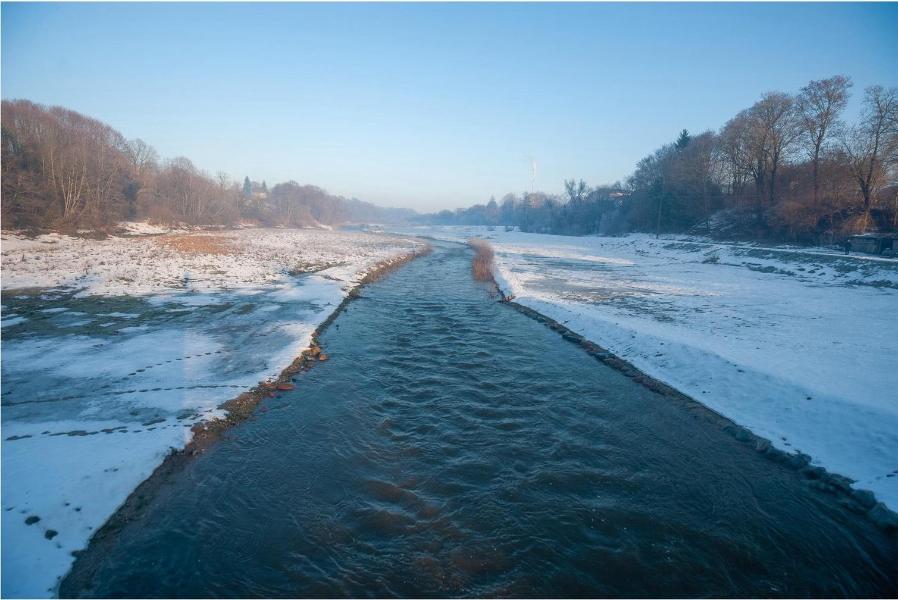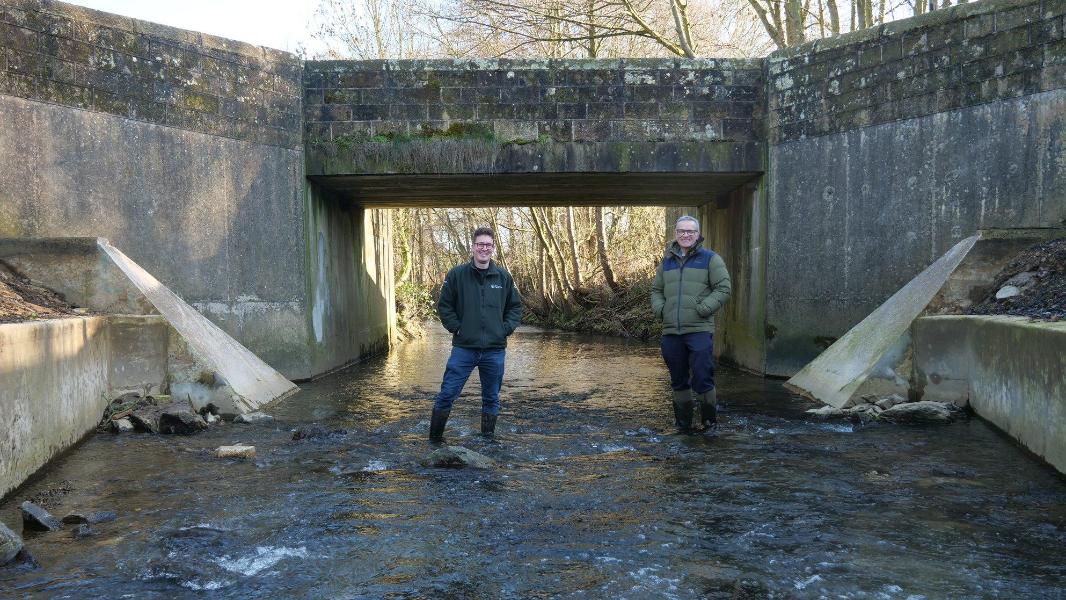Dams can be bad for rivers. Award-winning projects show how Europe’s fragmented rivers recover when barriers, like dams, are removed, boosting ecosystems and local economies
By Catherine McSweeney
Nature on the Cabrillas River in Spain’s Guadalajara province was in trouble. Blocked by two large weirs, each 3 metres high and no longer needed, the river’s flow was cut and fish numbers were in decline.
But a project to remove the weirs has reconnected the Cabrillas with the River Tajo, creating a free-flowing 50 kilometre-stretch of water that reconnects fish to their natural migratory routes.
It wasn’t easy to fix the problems of the Cabrillas. Activists had to persuade municipal authorities which initially rejected the application for the removal of the weirs. But just as the river prevailed in Spain, the tide is turning across Europe in the battle to remove barriers and restore rivers to their natural state.
It’s important that we recognise the best dam-removal projects, to encourage more municipalities to take this vital step towards greater biodiversity. The project for the removal of the weirs of the Molino Bajo and Molino del Cabrillas on the Cabrillas River won the 2022 Dam Removal Europe Award, announced in May 2023 at the international Dam Removal Europe Conference in Manchester. The European Investment Bank presented the winning project with a cash prize of €10 000 to be reinvested by the winner in future dam-removal projects. It’s the second year the EU bank was involved in the award.
Freeing the flow
Only a few free-flowing rivers remain in Europe. There are over one million barriers on Europe’s rivers. That’s almost one barrier for each river kilometre, according to Dam Removal Europe. This coalition of seven organisations (the WWF, The Rivers Trust, The Nature Conservancy, The European Rivers Network, Rewilding Europe, Wetlands International Europe, and The World Fish Migration Foundation) aims to restore rivers and streams in Europe to a free-flowing state.
Dam Removal Europe leads initiatives to remove barriers so that fish can migrate, and water quality and biodiversity are improved. Freeing rivers restores their role as natural buffers to reduce flooding and builds resilience to the impact of climate change. It also enhances local recreational opportunities.
Dams and other structures to impound rivers (which means raising the water above its natural level) are part of our industrial heritage. They were built for important purposes such as water storage, water supply, irrigation, energy production, river navigation, flow regulation and flood protection. Some river barriers still serve a purpose and need to be maintained, but a very large number are obsolete.
Why river barriers block biodiversity
When rivers don’t flow freely, a range of problems emerge. Single or multiple barriers along the course of a river hinder the transport of sediments. The sediments accumulate upstream, causing a lack of sand and gravel downstream. They trap organic material and nutrients, leading to algae bloom and a decrease in water quality. They change the speed and volume of water flow, exacerbating flood risk in heavy rainfall.
The impact of large dams is easiest to see. But smaller structures like weirs, sluices, culverts, fords and ramps also change waterways. They’re also more widespread.
The EU Biodiversity Strategy aims to remove redundant barriers on 25 000 kilometres of river by 2030 to restore free-flow. In part thanks to Dam Removal Europe, 325 dams or other structures were removed in 2022, a 36% increase on 2021.
- Listen to our podcast Nature’s Highways
The 2023 Dam Removal Europe Award nominees
Winner: Removal of the weirs of the Molino Bajo and Molino del Cabrillas, Spain
- The project’s success showed that careful planning and cooperation with administrators and the local population are key, through investing resources in information, dialogue and participation.
- The river’s renaissance will be recorded to track the restoration of its biodiversity.
Snake Lane Weir removal project, River Ecclesbourne, Derbyshire, UK
- The removal of a large concrete weir opened 28 kilometres of the river for fish migration.
- An Atlantic salmon that had recently spawned was found upstream soon after the barrier was removed.
- A cutting technique that minimised vibration and damage allowed the river area to remain open, so locals could view the project and talk about wider issues of dams and fish passage.
- The project’s success was attributed to engaging local people (670 school children and community groups) well in advance of work, explaining the project’s aims, focusing on the salmon lifecycle, and learning from local knowledge and experience.
Restoration of River Salantas, Lithuania
- Removal of a 94 metre-wide and 4 metre-high dam, reconnecting 67 kilometres of river to restore fish migration in a protected natural area.
- The project demonstrated the strong positive effect on biodiversity. Rivers recover quickly when dams are removed and the species that live in them flourish.

The Salantas river before the dam’s removal

The Salantas river after the dam’s removal
Ackers weir removal, River Cole, UK
- Removal of a 2.4 metre-high weir that impounded 500 cubic metres of silt contaminated with heavy metals, petroleum and other pollutants.
- Allows fish to migrate and sediment to move.
- Improves water quality and creates new habitats.
- Green engineering stabilises and replants natural grasses on the riverbank.
- Care was taken to reduce the scheme’s carbon footprint and cost.
Bowston weir removal project, River Kent, Cumbria, UK
- Bowston weir was built in 1874 for the paper-making industry.
- This was the first major barrier removal on the River Kent, which is designated for special protection for its type and associated habitats and species.
- Engagement with the riverside community was vital and included non-technical explanations of flood reduction impacts, question and answer documents, public meetings, visualisations of what to expect and regular updates during planning, mobilisation and removal.
Time to remove obsolete river barriers
According to European Environment Agency research, river fragmentation is one of the leading causes of a cumulative 80% decline in freshwater biodiversity and the loss of 55% of monitored migratory fish populations in Europe. With only one third of its rivers having ‘good ecological status, European rivers are probably more heavily modified than any other river systems in the world.
But the European Commission estimates that at least 150 000 barriers in European rivers are obsolete structures that no longer fulfil their original purpose, or are no longer needed. River barrier removal is increasingly seen as a viable, affordable and desirable option, contributing to the objectives of the European Union’s Water Framework Directive which focuses on reducing and removing pollution and ensuring that there is enough water to support wildlife and human needs.
Free flowing rivers boost regional economies by:
- regenerating a high-quality rural landscape
- creating local recreational and leisure activities such as angling and eco-tourism
- stimulating local jobs
- restoring a sense of local connection and pride.

Snake Weir, UK, after dam removal
Spotlighting successful dam removal projects
Many projects for removing barriers from rivers are bottom-up initiatives developed at local level. Dam Removal Europe was established to support local projects by providing expertise and to connect specialists with one another.
The European Investment Bank supports the Dam Removal Europe’s objectives, sponsoring the Dam Removal Europe Award, a competition to spotlight successful local initiatives to remove obsolete barriers from European rivers and encourage similar initiatives across Europe.
Seventeen barrier removal projects were submitted for this year’s award from seven European countries: two from Spain, one from Germany, one from Lithuania, six from France, five from the UK, one from Finland, and one from Luxembourg. Together, these projects reconnected 600 kilometres of river.
The winner was decided by a public vote, in which nearly 4 000 people participated.